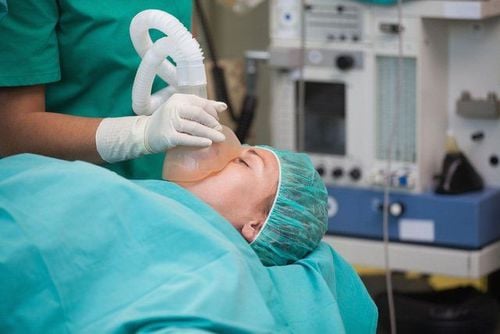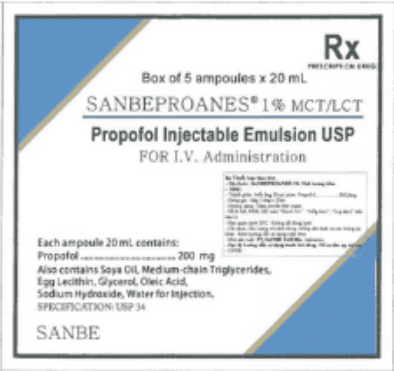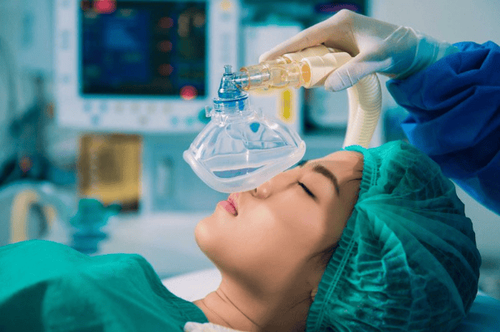This is an automatically translated article.
The article was professionally consulted by BSCK I Nguyen Xuan Tinh - Anesthesiologist - Resuscitation - Department of General Surgery - Vinmec Phu Quoc International General Hospital.Increasing pre-anesthesia and pre-intubation oxygen stores is a method used to prevent hypoxia during apnea. Because difficulties in ventilation and intubation are unpredictable, pre-anesthesia oxygen storage is essential in all patients.
1. Overview
Oxygen delivery (FiO2) is routinely applied before, during, and immediately after anesthesia to enhance the body's oxygen stores and slow down oxygen saturation during apnea. On release of anesthesia, remnants of anesthetics or muscle relaxants and analgesics can lead to impaired gas exchange (hypoventilation, hypoxemia, airway obstruction, etc.), therefore Pre-extubation oxygen storage is also recommended.2. Determine the efficiency of oxygen storage
The effectiveness of the oxygen reserve is judged by its potency and effectiveness. Indicators that help demonstrate effectiveness include:
Increase in oxygen concentration (the point of end-expiratory oxygen concentration reaches 90%) and decrease in alveolar nitrogen concentration (expiratory nitrogen concentration to 5%). Increased partial pressure of oxygen in arterial blood gases. The effectiveness of the oxygen reserve is expressed in the rate of reduction of hemoglobin oxygen saturation during apnea.
The benefits of giving oxygen during apnea depend on the following factors:
Ability to maximize oxygen storage. The extent to which the airway is maintained. The patient's functional residual capacity/body weight ratio.
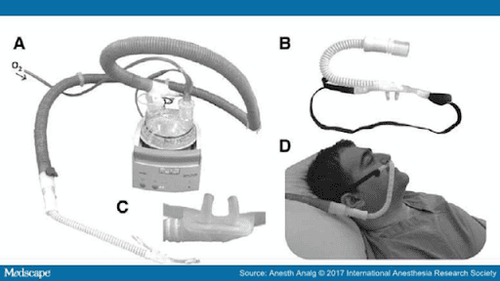
Dự trữ oxy tăng nồng độ oxy và giảm nồng độ nitơ
3. Advantages of increasing oxygen reserves before induction of anesthesia
Remnants of anesthetics and muscle relaxants can cause complications during the release of anesthesia such as:
Decreased muscle function in the pharynx. Hypoventilation, hypoxia, and upper airway obstruction make the patient unable to cough effectively. Increase the risk of aspiration by 5 times. Slows down hypoxia of peripheral chemoreceptors. Because of the problems with ventilation and airways mentioned above, oxygen storage is commonly applied before muscle relaxation or before extubation.
Pre-extubation oxygen storage is especially important because there are many physiological and anatomical changes during and after surgery that can limit gas exchange.
Oxygen storage is also recommended before any interruption of ventilation, eg open bronchial aspiration.
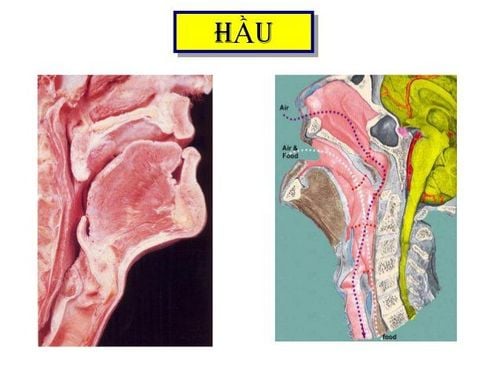
Dự trữ oxy giúp giảm nguy cơ suy giảm chức năng cơ vùng hầu.
4. Subjects of application
Use of high concentrations of FiO2 to increase oxygen stores prior to induction of anesthesia or intubation with the aim of slowing arterial hyposaturation has been recognized for many years. This technique is usually applied to the following subjects:
Patients at risk of aspiration. Patients with difficult prognosis for ventilation or intubation (often with limited oxygen reserve). Pregnant women need general anesthesia (essential). Patients with pathological obesity: easy to stop breathing, difficult to ventilate through the mask and difficult intubation (most necessary). Pediatric patients, children: often have a smaller functional residual capacity and consume more oxygen, so there is a risk of hypoxia in apnea or airway obstruction. The elderly: the respiratory system changes with age, the respiratory muscles weaken, parenchymal changes reduce the elasticity of the lungs. Patients with pulmonary disease: Pulmonary disease affects both the effectiveness and efficiency of the method. Anesthesia worsens the gas exchange capacity of patients with chronic obstructive pulmonary disease. Even a brief cessation of ventilation can result in severe (most necessary) hyposaturation. In general, because “unable to ventilate, cannot be intubated” is unforeseeable, an increase in oxygen stores prior to induction of anesthesia is necessary and recommended in all patients.
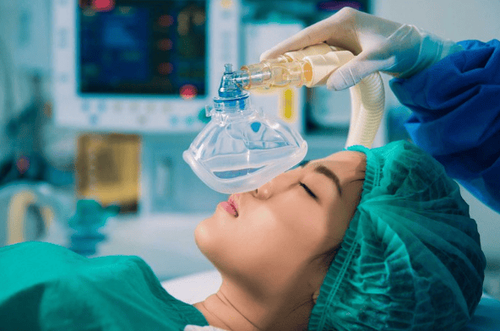
Phụ nữ mang thai cần gây mê toàn thân bắt buộc phải sử dụng nồng độ FiO2 cao
5. Techniques to increase oxygen storage
Several measures are applied to prolong the effectiveness of oxygen storage including:
Continuous oxygenation during apnea. Breathe continuous positive pressure (CPAP). Maintain positive end-expiratory pressure (PEEP) Non-invasive two-stroke positive airway pressure (biPAP). Transnasal High Flow Humidified Ventilation Exchange (THRIVE).
5.1. Continuously blowing oxygen when breathing stops
Increasing oxygen stores followed by a continuous supply of oxygen during apnea may help prolong the duration of safe apnea. This method is only useful when the patient has previously been maximally oxygenated, has a clear airway, and a high functional residual capacity/weight ratio.
The advantage of the method is maintaining oxygen supply for a longer time, and limiting the gradual increase of CO2 during apnea.
5.2. Continuous positive airway pressure (CPAP) and positive end-expiratory pressure (PEEP)
Continuous positive airway pressure (CPAP) breathing alone during oxygen storage in obese patients will not delay hyposaturation. This is because functional residual capacity will return to pre-CPAP levels as soon as the patient is anesthetized and the mask is removed.
However, if CPAP is administered and followed by continued mechanical ventilation with positive end-expiratory pressure (PEEP) within 5 minutes before removing the mask and securing the airway, the time before desaturation may be prolonged.
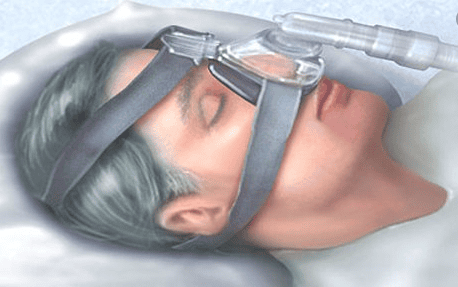
Thở áp lực dương liên tục (CPAP) không làm chậm hiện tượng giảm bão hòa
5.3. Transnasal High Flow Humidity Ventilation Exchange (THRIVE)
This is a new technique used in critically ill patients with difficult airways. THRIVE combines the benefits of an apnea technique with CPAP and reduces CO2 through dead space mixing and expulsion, prolonging safe apnea while not increasing CO2.
The technique of increasing the oxygen reserve should be performed correctly with monitoring of the oxygen concentration in the exhaled air. Since the benefits of oxygen storage may not be apparent in critically ill patients, a variety of approaches can be used to prolong the aim of increasing oxygen storage.
5.4. Non-invasive two-stroke positive airway pressure (BiPAP)
BiPAP breathing combines the benefits of pressure-assisted ventilation and continuous positive airway pressure (CPAP), keeping the lungs open throughout the breathing cycle. BiPAP breathing is used in oxygen storage to reduce shunt formation in the lung and increase the safe limit of apnea in obese patients. This method is also used to reduce pulmonary dysfunction after surgery and to treat patients with respiratory failure of various causes.
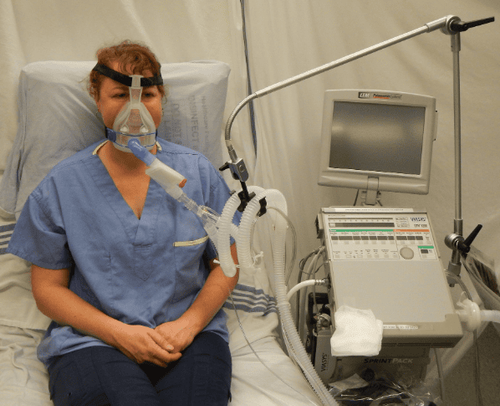
Hình ảnh thở áp lực dương hai thì không xâm nhập (BiPAP)
6. Disadvantages of Oxygen Storage
Possible risks of oxygen reserve (high FiO2) include:
Delay in detecting esophageal intubation. Generates oxidizing agents. Damage to the airways and lung parenchyma. Absorbent atelectasis: consequences of oxygen storage. Extrapulmonary toxicity Undesirable effects on hemodynamics. In particular, absorptive atelectasis can be limited, so it should not be considered as an impediment to routine oxygen storage.
Many studies show that increasing oxygen reserve before induction of anesthesia or after release of anesthesia slows hypoxia during apnea. Therefore, oxygen storage is recommended in all patients requiring general anesthesia.
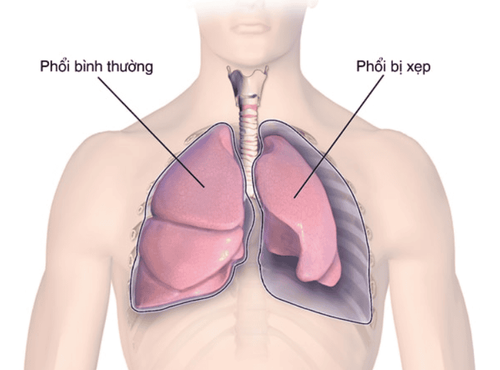
Dự trữ oxy (FiO2 cao) có thể tăng nguy cơ xẹp phổi
Vinmec International General Hospital is a high-quality medical facility in Vietnam with a team of highly qualified medical professionals, well-trained, domestic and foreign, and experienced.
A system of modern and advanced medical equipment, possessing many of the best machines in the world, helping to detect many difficult and dangerous diseases in a short time, supporting the diagnosis and treatment of doctors the most effective. The hospital space is designed according to 5-star hotel standards, giving patients comfort, friendliness and peace of mind.
Doctor Nguyen Xuan Tinh has more than 18 years of experience studying and working in the field of Anesthesia - Resuscitation. Before working as an anesthesiologist at the Department of General Surgery - Vinmec Phu Quoc International General Hospital, Dr. Tinh worked for a long time at Cam Xuyen Tinh District General Hospital, Ha Tinh.
To register for an examination at Vinmec International General Hospital, you can contact the nationwide Vinmec Health System Hotline, or register online HERE.







